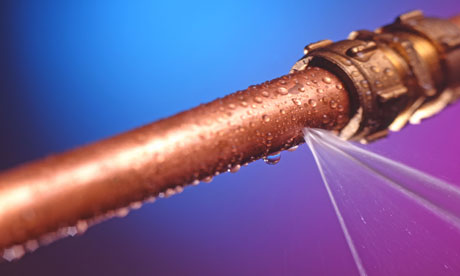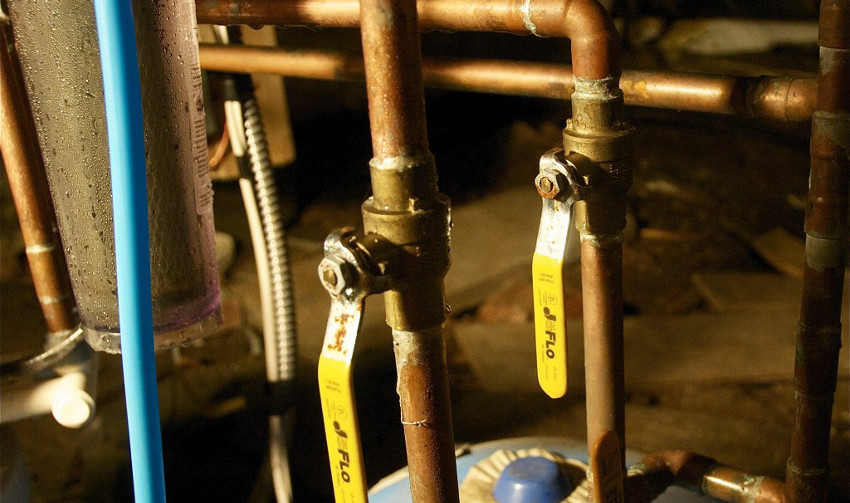Determining As Well As Repairing Plumbing Noises In Your House
Determining As Well As Repairing Plumbing Noises In Your House
Blog Article
The article which follows about Why Do My Plumbing Pipes Make A Knocking Noise is fairly attention-grabbing. Try it and make your own ideas.

To identify noisy plumbing, it is important to establish very first whether the unwanted sounds take place on the system's inlet side-in various other words, when water is turned on-or on the drain side. Sounds on the inlet side have actually varied causes: too much water stress, worn valve and also faucet parts, incorrectly linked pumps or other devices, improperly placed pipeline bolts, and plumbing runs containing way too many tight bends or other constraints. Noises on the drainpipe side normally come from poor area or, just like some inlet side noise, a format including tight bends.
Hissing
Hissing sound that occurs when a tap is opened somewhat generally signals too much water pressure. Consult your local public utility if you think this trouble; it will be able to inform you the water pressure in your location as well as can mount a pressurereducing valve on the incoming water system pipeline if needed.
Thudding
Thudding noise, commonly accompanied by shuddering pipelines, when a faucet or device valve is switched off is a condition called water hammer. The sound and resonance are triggered by the resounding wave of pressure in the water, which instantly has no location to go. Occasionally opening a shutoff that discharges water swiftly into a section of piping consisting of a restriction, arm joint, or tee fitting can create the very same condition.
Water hammer can normally be healed by setting up installations called air chambers or shock absorbers in the plumbing to which the problem shutoffs or taps are connected. These tools allow the shock wave produced by the halted circulation of water to dissipate in the air they consist of, which (unlike water) is compressible.
Older plumbing systems might have brief vertical areas of capped pipe behind wall surfaces on faucet runs for the very same purpose; these can ultimately loaded with water, decreasing or ruining their performance. The cure is to drain pipes the water supply completely by shutting off the primary water supply shutoff and opening all faucets. After that open up the main supply valve and also close the taps one at a time, starting with the tap nearest the shutoff and ending with the one farthest away.
Chattering or Shrilling
Extreme chattering or screeching that happens when a shutoff or tap is activated, and that typically vanishes when the installation is opened totally, signals loosened or defective interior parts. The option is to change the valve or faucet with a new one.
Pumps as well as home appliances such as cleaning equipments and dishwashers can transfer motor sound to pipelines if they are poorly attached. Connect such things to plumbing with plastic or rubber hoses-never rigid pipe-to isolate them.
Other Inlet Side Noises
Creaking, squeaking, scratching, snapping, as well as tapping normally are caused by the expansion or contraction of pipelines, usually copper ones providing hot water. The sounds happen as the pipelines slide versus loosened bolts or strike neighboring residence framework. You can usually determine the area of the trouble if the pipelines are revealed; just comply with the sound when the pipes are making sounds. Probably you will certainly find a loose pipe hanger or an area where pipes exist so near flooring joists or various other framing pieces that they clatter versus them. Affixing foam pipeline insulation around the pipelines at the point of call need to remedy the problem. Be sure straps and hangers are secure and also supply appropriate support. Where possible, pipe bolts must be connected to enormous structural elements such as structure wall surfaces rather than to framing; doing so decreases the transmission of resonances from plumbing to surfaces that can enhance and move them. If connecting fasteners to framework is inescapable, wrap pipes with insulation or various other durable material where they contact bolts, as well as sandwich the ends of brand-new bolts between rubber washing machines when mounting them.
Fixing plumbing runs that suffer from flow-restricting limited or various bends is a last resort that needs to be embarked on only after consulting a proficient plumbing professional. Unfortunately, this scenario is fairly usual in older homes that may not have been constructed with interior plumbing or that have seen a number of remodels, especially by beginners.
Drainpipe Sound
On the drain side of plumbing, the principal goals are to eliminate surface areas that can be struck by falling or hurrying water and to protect pipes to consist of unavoidable noises.
In new building, bathtubs, shower stalls, commodes, and wallmounted sinks and also basins must be set on or against durable underlayments to reduce the transmission of noise via them. Water-saving bathrooms and also faucets are much less loud than traditional models; mount them rather than older kinds even if codes in your area still permit making use of older fixtures.
Drains that do not run vertically to the basement or that branch right into horizontal pipe runs sustained at floor joists or various other mounting present especially troublesome noise troubles. Such pipes are big sufficient to radiate significant resonance; they also bring substantial amounts of water, which makes the scenario even worse. In new building, define cast-iron soil pipes (the big pipelines that drain bathrooms) if you can manage them. Their enormity contains much of the sound made by water travelling through them. Also, prevent transmitting drains in walls shown bed rooms and also rooms where people collect. Wall surfaces containing drainpipes must be soundproofed as was defined previously, using double panels of sound-insulating fiberboard as well as wallboard. Pipelines themselves can be covered with special fiberglass insulation made for the function; such pipelines have a resistant plastic skin (occasionally containing lead). Results are not always adequate.
WHY IS MY PLUMBING MAKING SO MUCH NOISE?
This noise indeed sounds like someone is banging a hammer against your pipes! It happens when a faucet is opened, allowed to run for a bit, then quickly shut — causing the rushing water to slam against the shut-off valve.
To remedy this, you’ll need to check and refill your air chamber. Air chambers are filled with — you guessed it — air and help absorb the shock of moving water (that comes to a sudden stop). Over time, these chambers can fill with water, making them less effective.
You’ll want to turn off your home’s water supply, then open ALL faucets (from the bathroom sink to outdoor hose bib) to drain your pipes. Then, turn the water back on and hopefully the noise stops! If you’re still hearing the sound, give us a call to examine further.
Whistles
Whistling sounds can be frustrating, as sometimes the source isn’t easily identified. However, if you can pinpoint which faucet or valve that may be the cause, you’ll likely encounter a worn gasket or washer — an easy fix if you replace the worn parts!Whistling sounds from elsewhere can mean a number of things — from high water pressure to mineral deposits. Your best plan of attack here is to give our plumbing experts a call. We’ll be able to determine where the noise is coming from and what the cause may be, then recommend an effective fix!
Cracks or Ticks
Cracking or ticking typically comes from hot water going through cold, copper pipes. This causes the copper to expand resulting in a cracking or ticking sound. Once the pipes stop expanding, the noise should stop as well.
Pro tip: you may want to lower the temperature of your water heater to see if that helps lessen the sound, or wrapping the pipe in insulation can also help muffle the noise.
Bangs
Bangs typically come from water pressure that’s too high. To test for high water pressure, get a pressure gauge and attach it to your faucet. Water pressure should be no higher than 80 psi (pounds per square inch) and also no lower than 40 psi. If you find a number greater than 80 psi, then you’ve found your problem!
Next step is to give us a call in order to install a pressure regulator. Trust us, you don’t want to wait to resolve this issue. Not only is the sound annoying, but high water pressure can be destructive to your home — including damaging certain appliances, like your washer and dishwasher.
Dripping
You might be accustom to the slow quiet drip your kitchen faucet makes. You might have even tuned out your bathroom sink dripping and drabbing all day long — but it’s time to find its cause.
A slow drip could signify a variety of easy to fix issues, such as a worn out O ring, or loose part. And by ignoring the drip, you could be wasting up to 2,000 gallons of water a year! So start conserving water — get it looked at ASAP.
https://www.pwessig.com/blog/2018/december/why-is-my-plumbing-making-so-much-noise-/

We hope you enjoyed reading our piece on How To Fix Noisy Pipes. Thank you for finding the time to read through our blog. Sharing is nice. You never know, you may be doing someone a favor. Thanks a bunch for your time. Kindly pay a visit to our site back soon.
This Site Report this page